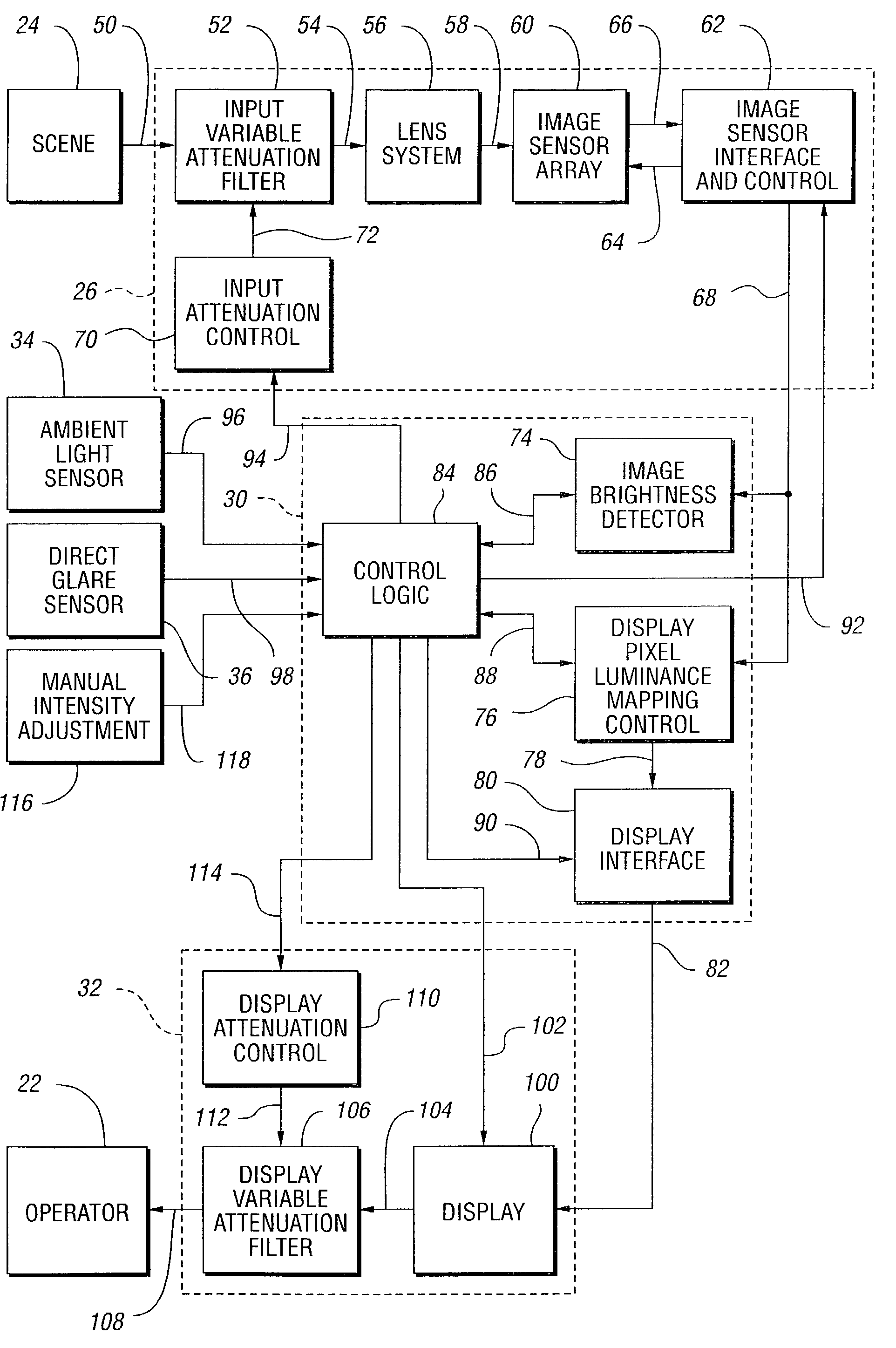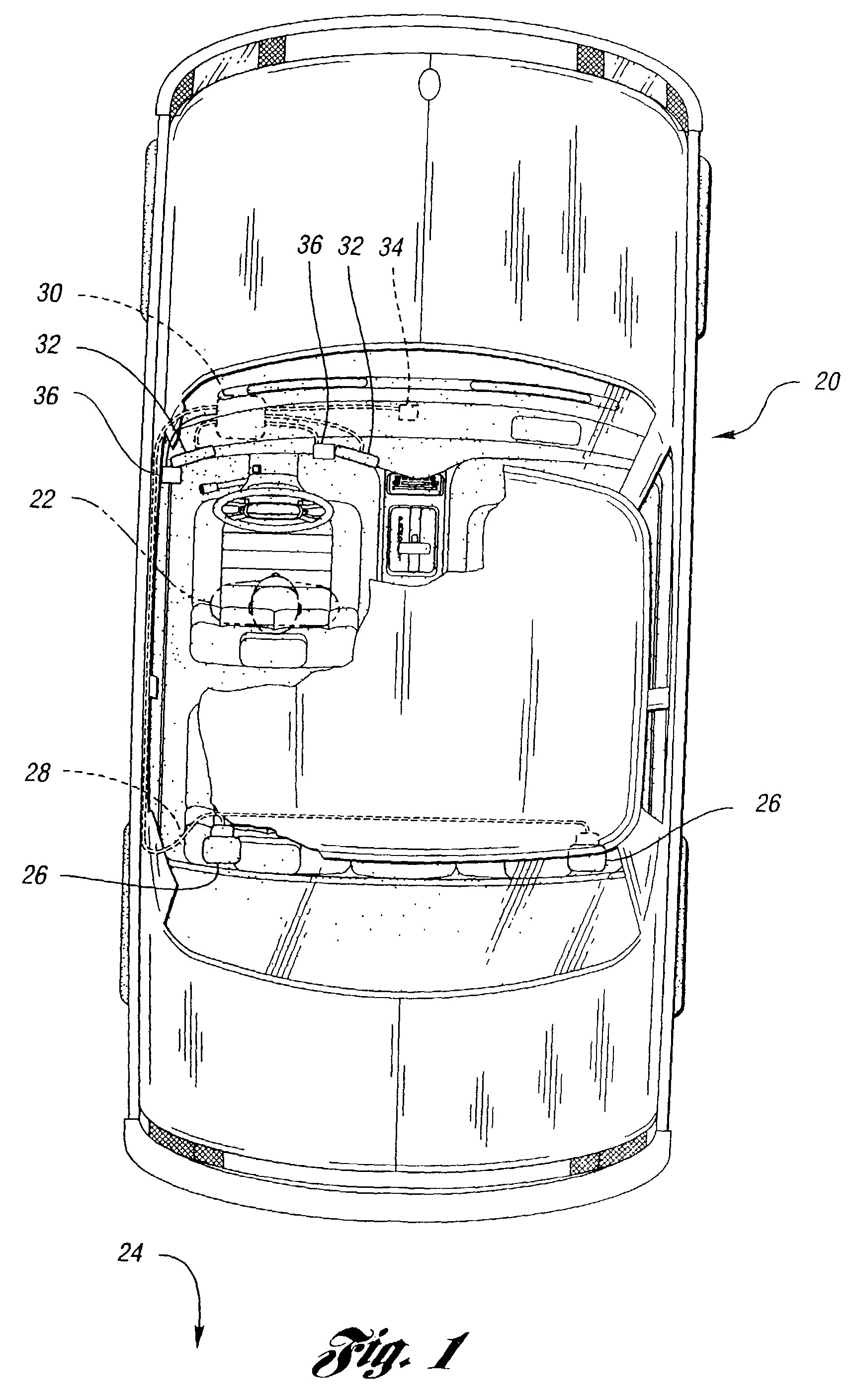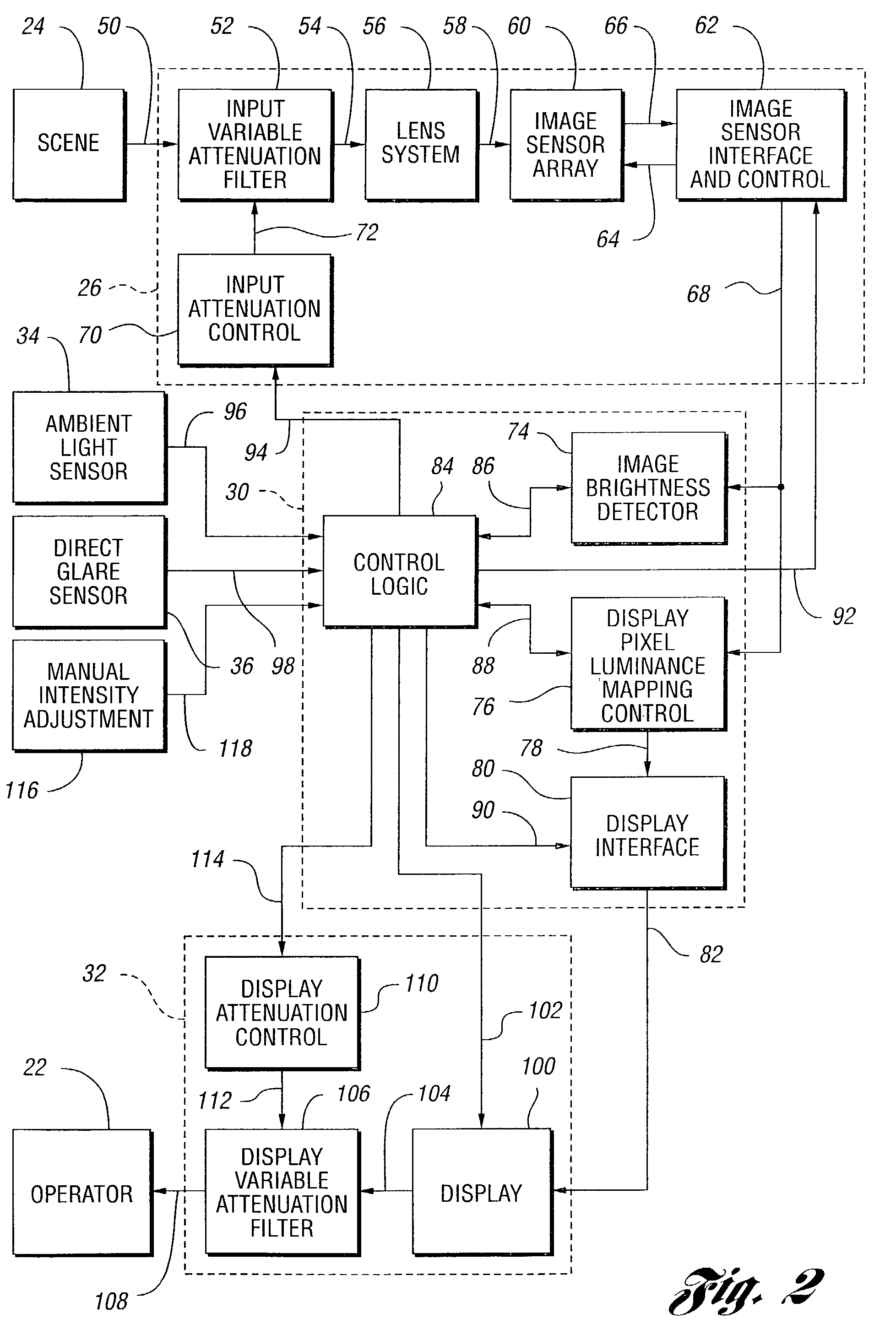Vehicle vision system
a vision system and vehicle technology, applied in the field of vehicle vision systems, can solve the problems of inability to modify the color balance for night vision, blind spots, wind resistance, etc., and achieve the effect of preventing compromising the night vision of the driver and high display light levels
- Summary
- Abstract
- Description
- Claims
- Application Information
AI Technical Summary
Benefits of technology
Problems solved by technology
Method used
Image
Examples
Embodiment Construction
[0031]Referring now to FIG. 1, a schematic diagram of the present invention is shown. Vehicle 20 is driven by operator 22. One or more camera systems 26 are operative to view a scene 24. In the example shown, scene 24 is generally behind vehicle 20. Of course, however, camera system 26 may be oriented in a variety of ways to view scenes at other locations about vehicle 20 including, but not limited to, the sides, back, front, bottom, top, and inside. In the example shown, signals representative of the scene are sent via channel 28 to a processor system 30. Input from an ambient light sensor 34 and direct glare sensor 36 is also available to processor system 30. Processor system 30 produces an enhanced image of scene 24 on one or more display systems 32.
[0032]In a particularly useful embodiment, a conventional mirror system is augmented by camera systems 26 which cover a wide field of view to the back and sides so that pedestrians or other objects directly back of vehicle 20 may be s...
PUM
 Login to View More
Login to View More Abstract
Description
Claims
Application Information
 Login to View More
Login to View More - R&D
- Intellectual Property
- Life Sciences
- Materials
- Tech Scout
- Unparalleled Data Quality
- Higher Quality Content
- 60% Fewer Hallucinations
Browse by: Latest US Patents, China's latest patents, Technical Efficacy Thesaurus, Application Domain, Technology Topic, Popular Technical Reports.
© 2025 PatSnap. All rights reserved.Legal|Privacy policy|Modern Slavery Act Transparency Statement|Sitemap|About US| Contact US: help@patsnap.com



